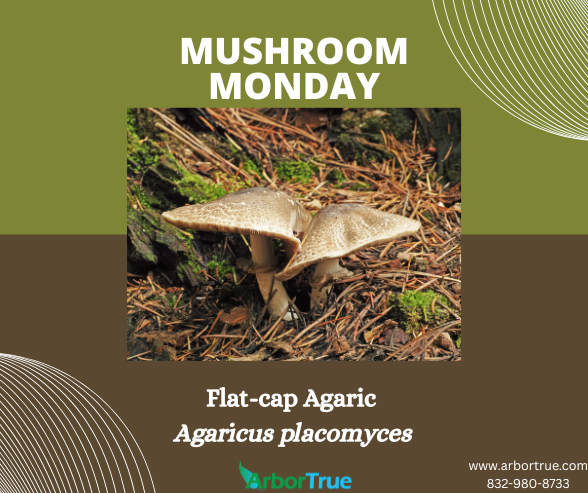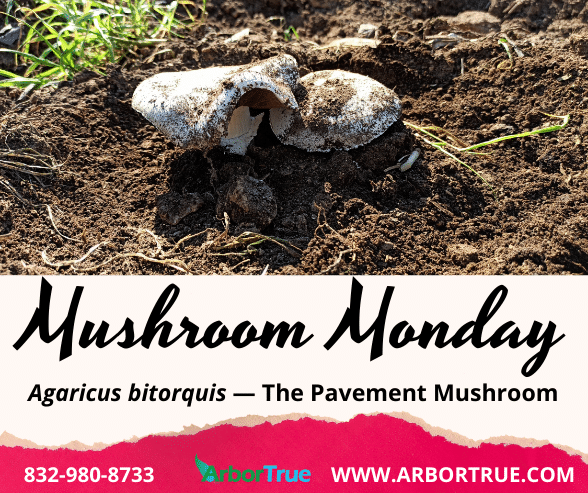
Spider Mites
December 15, 2023
What Exactly is Honey?
December 20, 2023

Mushroom Monday: Dryad’s Saddle
Today’s Mushroom Monday mushroom is Dryad’s Saddle (Cerioporus squamosus). Saddle up and get ready to learn about this amazing mushroom.
Dryad’s saddle does sort of resemble a saddle in appearance, which is where part of their name comes from. They are somewhat flat and grow alone or in clusters as layers. They have a brown scale coloration on top and can look like feathers on certain birds or a bit like pancakes before you flip them. They are light brownish in color with sometimes a darker brown edge on the cap.
The caps of dryad’s saddle are around three to twelve inches in diameter and they can be four inches thick or less and can appear quite large. They have a thick stem that somewhat comes out at an angle.
Among other places, dryad’s saddle can be found in Texas. They can be found around trees that have fallen and might be most visible in spring, at around the same time that morels are out. They can produce fruit (the mushroom part you see) multiple times during the year.
The dryad’s saddle mushroom has the interesting characteristic that it can be both saprophytic and parasitic. It can be a saprophyte on dead trees and a parasite on living ones. As we’ve mentioned before, generally speaking, a saprophyte mushroom gets its nutrients from dead organic matter and a parasite mushroom gets its nutrients from living organic matter (while harming the living organic matter in the process). Saprophytic mushrooms are an important part of the ecosystem because they decompose organic matter that then becomes available for other plants.
One curious fact about dryad’s saddle is that they can smell a bit like watermelon.
We hope you liked learning about today’s Mushroom Monday mushroom, dryad’s saddle. If you did, check out our other mushroom posts and follow us on social media to keep up with them. As always, if you need tree service, give us a call at 832-980-8733 or contact us online.



